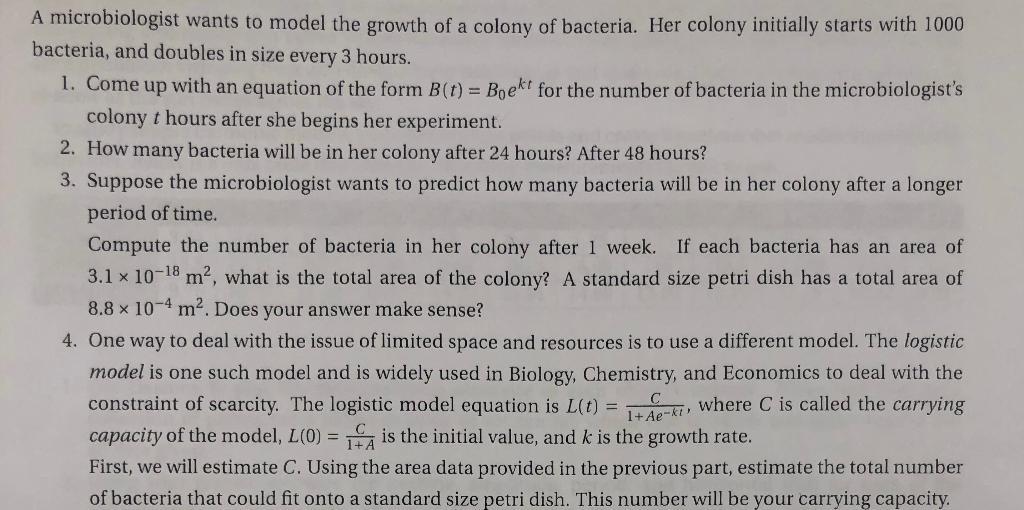Answered step by step
Verified Expert Solution
Question
1 Approved Answer
A microbiologist wants to model the growth of a colony of bacteria. Her colony initially starts with 1000 bacteria, and doubles in size every

A microbiologist wants to model the growth of a colony of bacteria. Her colony initially starts with 1000 bacteria, and doubles in size every 3 hours. 1. Come up with an equation of the form B(t) = Boekt for the number of bacteria in the microbiologist's colony t hours after she begins her experiment. 2. How many bacteria will be in her colony after 24 hours? After 48 hours? 3. Suppose the microbiologist wants to predict how many bacteria will be in her colony after a longer period of time. Compute the number of bacteria in her colony after 1 week. If each bacteria has an area of 3.1 x 10-18 m, what is the total area of the colony? A standard size petri dish has a total area of 8.8 x 10-4 m. Does your answer make sense? 4. One way to deal with the issue of limited space and resources is to use a different model. The logistic model is one such model and is widely used in Biology, Chemistry, and Economics to deal with the constraint of scarcity. The logistic model equation is L(t) = 1+ A-k, where C is called the carrying capacity of the model, L(0) = is the initial value, and k is the growth rate. First, we will estimate C. Using the area data provided in the previous part, estimate the total number of bacteria that could fit onto a standard size petri dish. This number will be your carrying capacity.
Step by Step Solution
★★★★★
3.55 Rating (165 Votes )
There are 3 Steps involved in it
Step: 1
Step by step solution 1 The equation for the number of bacteria in the microbiologists colony t hour...
Get Instant Access to Expert-Tailored Solutions
See step-by-step solutions with expert insights and AI powered tools for academic success
Step: 2

Step: 3

Ace Your Homework with AI
Get the answers you need in no time with our AI-driven, step-by-step assistance
Get Started


